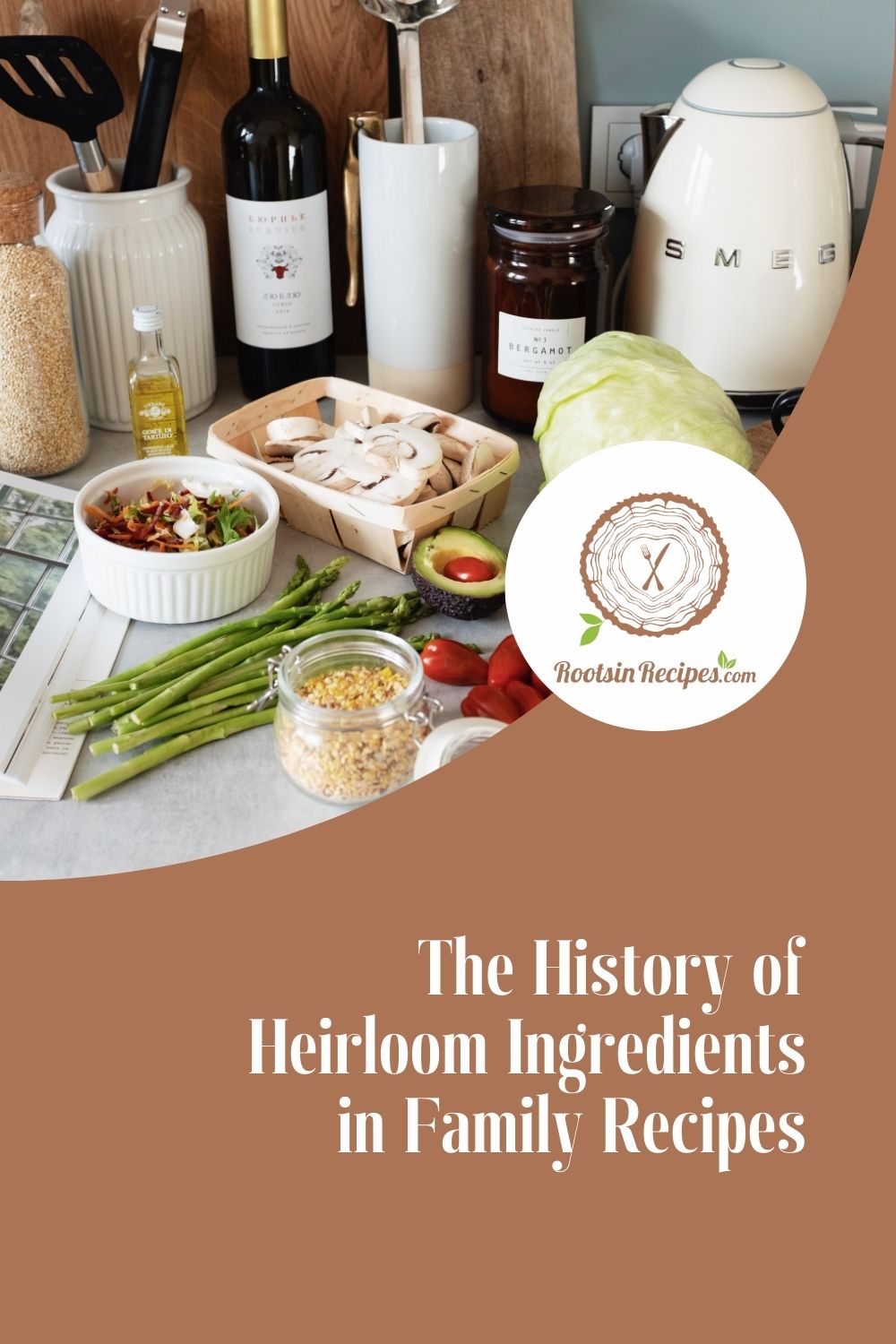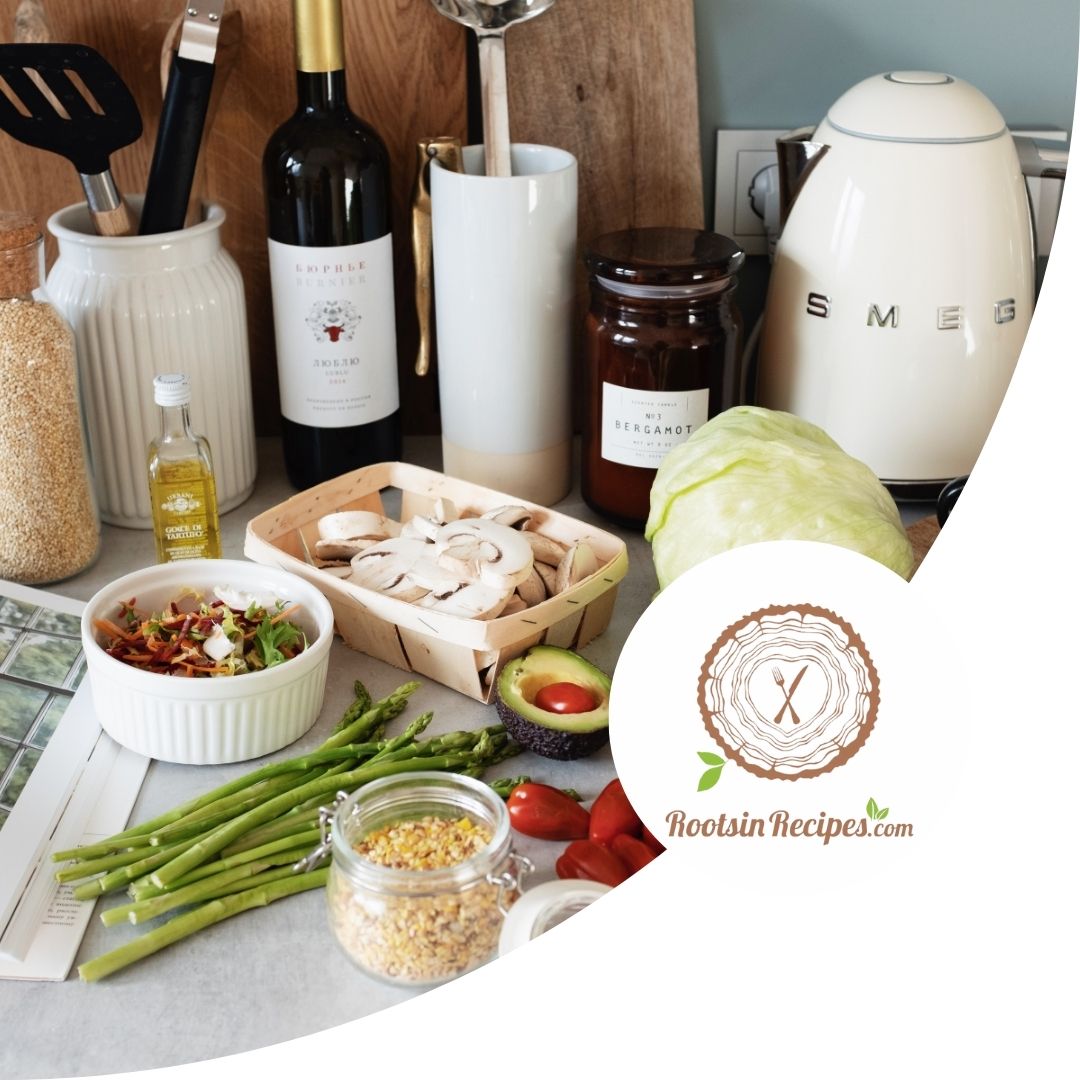
Introduction: Timeless Ingredients, Timeless Stories
In every family recipe lies a story, and often, that story begins with an ingredient. The heirloom tomatoes in a Sunday sauce, the grains used in a heritage bread recipe, or the spices that define a cultural stew—these ingredients carry histories as rich as the dishes they create. Family recipes are more than just instructions; they’re edible legacies, woven together by the heirloom ingredients that have stood the test of time.
January is National Slow Cooking Month, a celebration of the methodical, soulful approach to cooking that pairs perfectly with heirloom ingredients. As we explore their cultural significance, let’s honor their role in preserving the flavors and stories that make family recipes truly special.

A Cultural Legacy in Every Bite
Heirloom ingredients are a testament to the resilience and creativity of our ancestors. Unlike modern, hybridized crops bred for uniformity and mass production, heirloom ingredients are varieties that have been passed down through generations, often because of their superior flavor, adaptability, and connection to a specific place or culture.
Take, for example, the Cherokee Purple tomato. This tomato variety, cherished for its deep, smoky flavor, is believed to have been cultivated by the Cherokee people. It represents a snapshot of agricultural history, a time when tomatoes weren’t just a crop but a lifeline and a cultural symbol. Similarly, Carolina Gold rice, a staple of Southern cooking, reflects the ingenuity and resilience of enslaved African people who brought their knowledge of rice cultivation to the Americas, shaping the culinary landscape of an entire region.
By incorporating these heirloom ingredients into family recipes, we do more than create delicious meals—we honor the cultures, histories, and stories they represent.
The Flavors That Built Traditions
Every heirloom ingredient has a unique flavor profile that sets it apart from its modern counterparts. These flavors often define traditional dishes, making them taste distinctly “like home.”
Think of the rich, nutty flavor of heirloom corn in cornbread or tortillas. This type of corn, whether it’s Oaxacan Green or Bloody Butcher, is a world apart from the starchy, flavorless kernels of mass-produced corn. Families who’ve passed down recipes for tamales, grits, or polenta often find that these dishes don’t quite taste the same without heirloom varieties.
Or consider spices like heirloom varieties of cinnamon or turmeric. Grown in specific regions and harvested with traditional methods, these spices carry a depth of flavor that elevates family recipes, giving them a complexity modern substitutes can’t replicate. Preserving these ingredients in our kitchens ensures that we continue to savor the same tastes our ancestors enjoyed.
Why Preserving Heirloom Ingredients Matters
In an era of industrialized agriculture and global supply chains, heirloom ingredients face the risk of disappearing. Crops bred for durability, yield, and uniformity often replace the diverse, flavorful varieties that once defined our diets. This loss isn’t just culinary—it’s cultural.
When we lose heirloom ingredients, we lose a piece of history. The seeds, stories, and traditions tied to these ingredients are part of our collective heritage. Their preservation isn’t just about maintaining biodiversity; it’s about safeguarding the memories and values of those who came before us.
For families, heirloom ingredients provide a tangible connection to the past. Using these ingredients in traditional recipes creates a bridge between generations, allowing grandparents and grandchildren to share a common culinary language. They also serve as a way to pass down values, like the importance of sustainability, patience, and respect for the earth.
Cooking with Heirloom Ingredients: A Return to Tradition
One of the best ways to honor heirloom ingredients is through slow cooking—a method that mirrors the care and patience with which these ingredients were cultivated. Slow cooking allows their complex flavors to shine, transforming humble ingredients into deeply satisfying meals.
Take dried heirloom beans, for instance. Varieties like the Anasazi bean, which has been cultivated for centuries in the Southwest, develop a creamy texture and earthy flavor when simmered over low heat. Add these to a pot with heirloom spices, onions, and garlic, and you’re not just making a meal—you’re reviving a tradition.
Similarly, heirloom root vegetables like parsnips, turnips, or carrots reach their peak flavor when slow-cooked. Their natural sweetness intensifies, creating a dish that’s both nourishing and nostalgic. Recipes like a slow-cooked root vegetable stew or a braised meat dish with heirloom potatoes can become signature meals for family gatherings.
Honoring National Slow Cooking Month with a Heritage Recipe
January’s celebration of National Slow Cooking Month is the perfect opportunity to bring heirloom ingredients into your kitchen. Slow cooking allows these timeless flavors to unfold naturally, creating dishes that taste deeply authentic and connected to the past.
Here’s a recipe that highlights the beauty of slow cooking with heirloom ingredients:
Heirloom Bean and Vegetable Stew
Ingredients:
- 1 cup dried heirloom beans (such as Anasazi or Jacob’s Cattle beans)
- 2 heirloom carrots, peeled and sliced
- 1 heirloom parsnip, peeled and diced
- 2 heirloom tomatoes, chopped (or 1 cup canned heirloom tomatoes)
- 1 medium onion, chopped
- 2 cloves garlic, minced
- 4 cups vegetable or chicken stock
- 2 tsp heirloom paprika (optional, for added depth)
- 1 bay leaf
- Salt and pepper to taste
- Fresh parsley for garnish
Instructions:
Soak the beans overnight in cold water. Drain and rinse before use.
In a slow cooker, combine all ingredients except the parsley. Stir to mix.
Cook on low for 6–8 hours, or until the beans and vegetables are tender.
Taste and adjust seasoning as needed. Garnish with fresh parsley before serving.
This simple yet flavorful stew highlights the unique qualities of heirloom beans and vegetables, making it a perfect dish to share with family on a chilly winter evening.
Keeping the Tradition Alive
Cooking with heirloom ingredients isn’t just about the past—it’s about the future. By choosing these ingredients and sharing the recipes that feature them, we ensure that their stories continue to be told. It’s a small but powerful way to resist the homogenization of our food system and celebrate the diversity that makes our culinary heritage so rich.
Family recipes are often at the heart of these traditions. If you’ve ever tasted a dish and thought, “This tastes like my childhood,” chances are it was made with an ingredient that carried history in its flavor. By consciously seeking out and preserving these ingredients, you’re not just recreating a dish—you’re preserving a memory.
Conclusion: The Legacy of Timeless Flavors
The history of heirloom ingredients is the history of resilience, culture, and family. From the fields where they were first cultivated to the kitchens where they’ve been lovingly prepared, these ingredients tell stories that connect us to our ancestors and inspire us to pass those stories on.
This January, as we celebrate National Slow Cooking Month, take the time to honor heirloom ingredients in your family recipes. Whether it’s through a slow-cooked stew, a freshly baked loaf of bread, or a simple bowl of beans, let their timeless flavors remind you of the power of tradition.
In preserving heirloom ingredients, we preserve not just the taste of the past but the spirit of the people who came before us. So gather your family, dust off those old recipes, and savor the flavors that have stood the test of time.